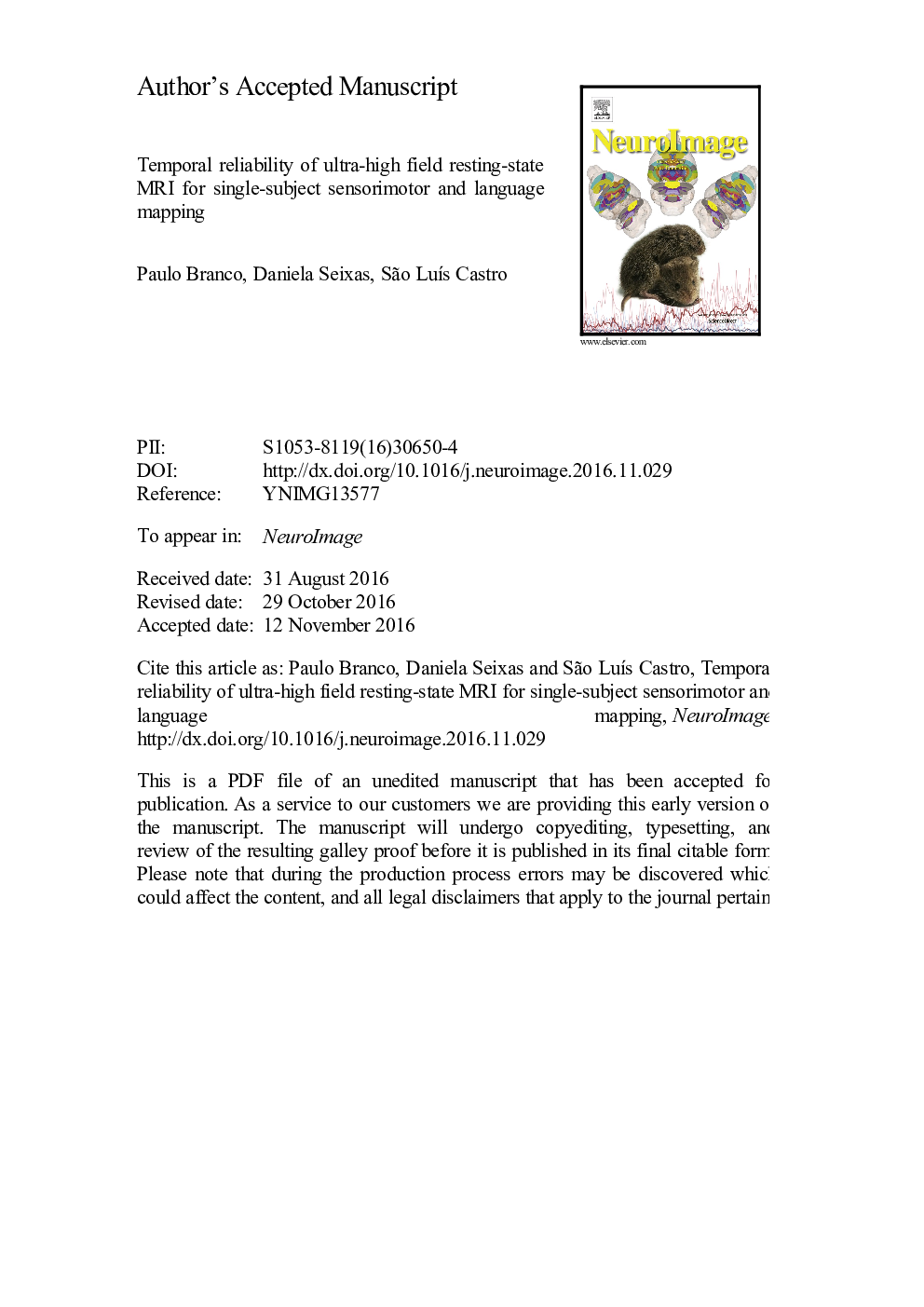| Article ID | Journal | Published Year | Pages | File Type |
|---|---|---|---|---|
| 8687256 | NeuroImage | 2018 | 45 Pages |
Abstract
Resting-state fMRI is a well-suited technique to map functional networks in the brain because unlike task-based approaches it requires little collaboration from subjects. This is especially relevant in clinical settings where a number of subjects cannot comply with task demands. Previous studies using conventional scanner fields have shown that resting-state fMRI is able to map functional networks in single subjects, albeit with moderate temporal reliability. Ultra-high resolution (7Â T) imaging provides higher signal-to-noise ratio and better spatial resolution and is thus well suited to assess the temporal reliability of mapping results, and to determine if resting-state fMRI can be applied in clinical decision making including preoperative planning. We used resting-state fMRI at ultra-high resolution to examine whether the sensorimotor and language networks are reliable over time - same session and one week after. Resting-state networks were identified for all subjects and sessions with good accuracy. Both networks were well delimited within classical regions of interest. Mapping was temporally reliable at short and medium time-scales as demonstrated by high values of overlap in the same session and one week after for both networks. Results were stable independently of data quality metrics and physiological variables. Taken together, these findings provide strong support for the suitability of ultra-high field resting-state fMRI mapping at the single-subject level.
Keywords
Related Topics
Life Sciences
Neuroscience
Cognitive Neuroscience
Authors
Paulo Branco, Daniela Seixas, São LuÃs Castro,
